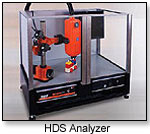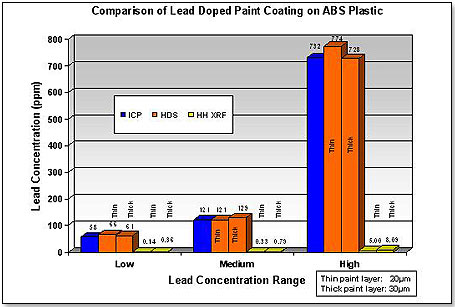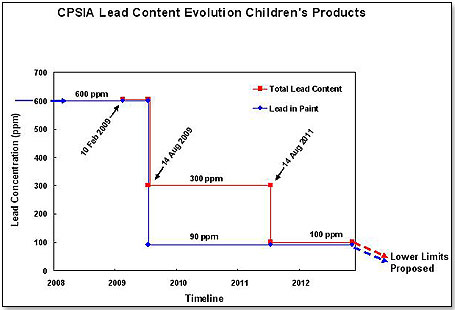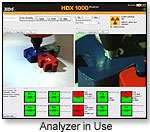 |

Tools:








HDS Technology Offers Practical Alternative for Lead Testing ToysMethod Boasts Quick, Accurate Screening and Quantification of Lead in Paint and Substrates
| “We believe that the industry and its regulators will see that, truly, this HDS technique is a fit-for-purpose solution for CPSIA compliance.” — Berry Beumer, XOS |
With additional reporting by Berry Beumer. The following is a paid advertorial.
The U.S. Consumer Product Safety Commission recently reconfirmed use of ICP-OES* as the gold standard for determining lead content in paint and painted surfaces, approving the paint-scrape and chemical analysis method for laboratory testing of toys and other children’s products for compliance with the Consumer Product Safety Improvement Act of 2008. Yet, developments from XOS suggest that a simpler, less expensive and less time-consuming technology could be used as an alternative to ICP. High Definition Spectroscopy, or HDS, is available for both screening and quantification of lead in paint and base materials of toys.
 “Traditionally, the primary way to quantify lead content in a paint layer or in a substrate is this ICP technique, which requires hours of sample preparation before you can get a result,” Berry Beumer, vice president of sales and marketing at XOS, told TDmonthly Magazine. “However, it is not practical to use as a screening or quantification method in a high-throughput production environment.” “Traditionally, the primary way to quantify lead content in a paint layer or in a substrate is this ICP technique, which requires hours of sample preparation before you can get a result,” Berry Beumer, vice president of sales and marketing at XOS, told TDmonthly Magazine. “However, it is not practical to use as a screening or quantification method in a high-throughput production environment.”
Unlike ICP, HDS doesn’t require a chemist, involves no consumables, requires minimal operator training, and provides results in just minutes. HDS accommodates raw materials, parts or the complete toy directly from the production process without alteration or sample preparation.
TAKING SCREENING AND QUANTIFICATION TO A NEW LEVEL
Its capability for speed testing is somewhat akin to quick-screening with handheld x-ray fluorescence (XRF) guns used to check toy batches for possible toxic elements. Following handheld XRF screening, questionable items are sent to a lab for further testing.
The difference with HDS is it can determine the actual concentration of lead and other toxic elements, avoiding the need for expensive ICP testing at a lab. HDS can provide reliable results even well below 90 parts per million — the CPSIA lead-in-paint limit effective August 2009. And, since HDS reports separately the concentration of toxins in coatings and substrates, as opposed to a “weird average” of the two obtained by XRF guns, Beumer said, it eliminates the need to remove paint for separate testing, as in ICP analysis.
The graph below shows the agreement in lead-test results between ICP and HDS methods, and, conversely, the vast disparity with handheld XRF readings.

Although handheld XRF guns are fast and easy to use, results for coatings can be off by more than 100x, Beumer told TDmonthly, which often results in undetected lead when levels in the paint may exceed CPSIA limits. The CPSC expressed concern over the reliability of handheld XRF guns in screening for lead in paint at lower regulatory limits during a May 13, 2008, workshop in which representatives demonstrated a handheld XRF unit.

“It’s essentially impossible to measure or quantify or even screen for lead in paint or metals using traditional XRF techniques,” Beumer said, especially considering the lower lead limits going into effect.
MEETING INDUSTRY NEEDS
 A team of engineers and scientists labored for about a year and a half to bring HDS from concept to finished product designed to meet CPSIA regulations, Beumer told TDmonthly. While the method is applicable to numerous industries, its development for the toy industry in particular was in response to the CPSC’s request that analytical companies develop alternative methods for screening and quantifying lead in paint for purposes of certification. A team of engineers and scientists labored for about a year and a half to bring HDS from concept to finished product designed to meet CPSIA regulations, Beumer told TDmonthly. While the method is applicable to numerous industries, its development for the toy industry in particular was in response to the CPSC’s request that analytical companies develop alternative methods for screening and quantifying lead in paint for purposes of certification.
A single HDS unit runs about $70,000.
In addition to testing labs, it can be used in factories or by toy distributors who wish to test in high volume and gather internal data. With HDS, users don’t have to worry about compromised results or weak traceability since the sample does not need to be destroyed and the analyzer captures digital images of the sample with the test results, creating a tamper-proof record that cannot be deleted.
A 1mm spot on the end of the analyzer tip allows for measurement of small paint areas and different material, even on irregularly shaped surfaces. HDS is useful for the full range of elements outlined in ASTM F963.
“Ultimately,” Beumer said, “we believe that the industry and its regulators will see that, truly, this HDS technique is a fit-for-purpose solution for CPSIA compliance.”
An important step for broad-based acceptance for HDS is coverage by an internationally recognized test standard, Beumer commented. Currently, the drafting of a standard test method for HDS is proceeding under ASTM Committee F40.
*Inductively Coupled Plasma-Optical Emission Spectroscopy
 Writer's Bio: Writer's Bio: Julie L. Jones has written articles for both newspapers and magazines. Before joining the staff of TDmonthly Magazine, she worked as a communications writer and provided editorial support for a market research company. Read more articles by this author
THIS BANNER IS AN AD:

• • • • • • • • • • • • • • | • • • • • • • • • • • • • • |
Back to TDmonthly's front page
|  |
Advertise on TDmonthly

|

